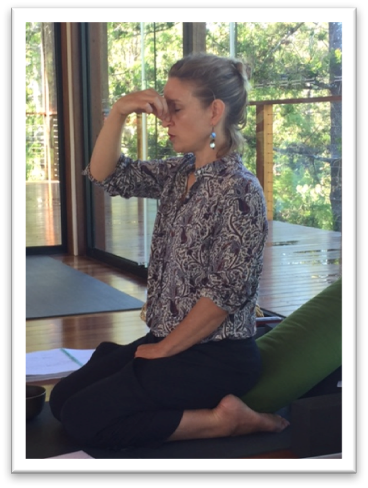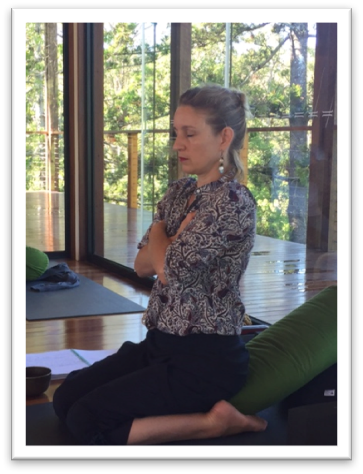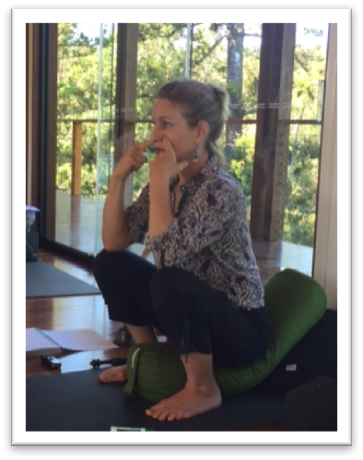These notes were a snippet taken from a Clinical Yoga Therapy workshop we did on Breathing and the Respiratory system.
We are looking at natural ways to unblock the nasal passages and possibly induce a shift nasal laterality.
This nasal shift occurs every 1-6 hours in healthy individuals and effects brain hemisphere dominance and therefore our states of relaxation, sleep, flight or fight. Furthermore, we look to unblock the sinuses naturally which in turn has an affect on contralateral brain hemispheric shifting from left to right (or vice versa) and our mental states.
Virasana
Here we are looking at ways to decongest the nasal passages to ensure we are breathing effectively. Once again we are concentrating on not over breathing i.e. only taking in a small soft inhale and exhale– as though we are trying not to disturb the cilia (the fine hairs of the nasal passage) and neural endings in the nose. Following the exhale we pinch the nose and nod the head holding the breath for as long as possible. When we are ready to inhale but, before we feel the need to gasp, release the nose and gently breathe in through the nose.
Padadhirasana
Another way to decongest the nasal passages is by exerting pressure to the auxiliary nodes in the armpits. By taking this posture of padadhirasana we are working balancing Ida and Pingala nadis by opening the left and right nasal passages. This will bring balance to the sympathetic and parasympathetic nervous systems and bring us into a more meditational state.
Lowering the breathing rate from the normal 15-20 breath per minute ratio to 6 breaths per minute will assist in dilating the arterioles of the vascular system and reduce the risk of heart attacks.
Padadhirasana variation
In this variation of padadhirasana we are creating a fist to exert pressure on the auxiliary nodes in the armpit this will open the contralateral nostril.
When we have our left nostril open and right closed we are often more quiet, passive, relaxed and in our parasympathetic nervous systems rest and digest response. Where as when we have our right nostril open and our left closed we are often ore outwardly directed, ready for vigorous activity, more attentive to detail, ready for intellectual pursuits and in the sympathetic nervous system – ready for flight or fight response.
Phana Marma
We can also decongest the nasal passage by stimulating phana marma. Phana is perhaps the most important marma for pranayama and for the control of the prana through the practice of Nadi Shodhana (alternate nostril breathing).
Nadi Shodhana will heighten sensitivity to the flow of breath. Practice this without sound or turbulence of the breath to promote normal left to right nasal laterality.
By pressing this marma point – just to the side of the nostril – you will be stimulating the nostril on the same side i.e. pressing the right phana marma point will stimulate the right nostril.
Teachings by Celia Roberts and notes by Georgie Kerr.
Please feel free to email for more information or book yourself in for a private session to assist with your breathing, respiration in a natural non-invasive way.







